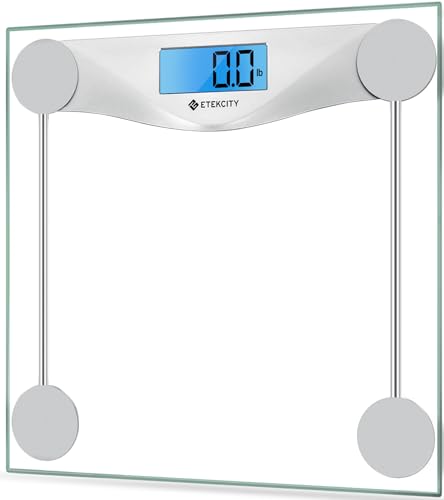How to Check Weight Loss Without Weighing Machine?
Checking weight loss without a scale involves tracking physical body measurements, analyzing clothing fit, and recording qualitative non-scale victories (NSVs). Since typical weight fluctuations often mask genuine fat loss, especially when building muscle, monitoring changes in body composition and functional health provides a far more accurate assessment of sustained progress than relying solely on a number on a machine. This method of tracking progress without a scale focuses on true body transformation and metabolic health improvements.
Essential Physical Measurement Techniques
The most reliable quantitative alternative to the scale is using a simple tape measure to track physical dimensions. This method directly assesses the reduction of circumference in common fat storage areas, regardless of muscle gain. For accurate results, certified fitness professionals recommend measuring consistently, ideally once every 2–4 weeks.
🛒 Recommended Product
Accurate Tape Measure Tracking
To track accurately, measure on the same day of the week, preferably in the morning before eating, and ensure the tape measure is snug against the skin without compressing the underlying tissue.
Key areas to measure for accurate body composition tracking include:
- Waist: Measure at the narrowest point, usually just above the belly button. Studies, including research highlighted by the World Health Organization (WHO), show that waist circumference is a critical indicator of visceral fat (fat surrounding organs) and overall metabolic health risk.
- Hips: Measure at the widest point around the buttocks.
- Chest/Bust: Measure around the fullest part of the bust (or across the nipples for men).
- Thighs: Measure the circumference of the upper thigh, roughly one inch below the gluteal fold.
- Arms: Measure the circumference of the dominant bicep when relaxed.
By documenting these metrics, individuals can clearly visualize inches lost, which is a powerful metric of body change that the scale often obscures. This focused approach is an excellent strategy for anyone wondering how to check weight loss without a weighing machine.
Interpreting Visual Changes and Clothing Fit
One of the most motivating ways to track progress is through visual confirmation, focusing on how your body looks and how your clothes feel.
Progress Photos
Taking progress photos is a crucial, objective way to record transformation that happens too gradually to notice day-to-day. Take full-body photos from three angles (front, side, and back) every 4–6 weeks.
Tips for Effective Progress Photography:
- Consistent Lighting and Location: Use the same spot with the same natural lighting to avoid deceptive shadows.
- Consistent Attire: Wear the same minimal clothing (swimsuit or athletic wear) to highlight physical changes effectively.
- Consistent Pose: Use a natural, relaxed stance. Do not flex or pose dramatically, as this hinders objective comparison.
When reviewing, pay attention to specific areas like the definition in your collarbones, the narrowing of your hips, and the reduction of belly protrusion. Many people report that the visual evidence of shape change far outweighs the psychological impact of scale weight.
🛒 Recommended Product
Using Clothing as a Metric
The “non-scale victory” of clothing fit is often the most noticeable marker of success. If clothes fit looser, if a belt needs tightening, or if you can comfortably wear garments previously too small, you are successfully reducing body mass and inches. Losing one full clothing size (e.g., going from a size 12 to a size 10) typically corresponds to a loss of 10 to 15 pounds of body weight, though this varies based on height and body structure.
The Power of Non-Scale Victories (NSVs)
Non-scale victories (NSVs) are improvements in quality of life and functional health that occur alongside fat loss. These are highly subjective but reflect powerful internal physiological changes that signal true progress.
Key Non-Scale Victories to Track:
- Improved Energy Levels: Not needing an afternoon nap or experiencing consistent, sustainable energy throughout the day.
- Enhanced Sleep Quality: Falling asleep faster, staying asleep longer, and waking feeling refreshed.
- Fitness and Strength Gains: Being able to lift heavier weights, run longer distances, or climb stairs without becoming winded. For instance, being able to complete a 5K race or lifting a personal record (PR) in the gym are direct results of improved health and body composition.
- Mental Clarity and Mood: Experiencing reduced anxiety, clearer focus, and better overall emotional regulation.
- Reduced Pain and Discomfort: Fewer aches in joints, reduced back pain, or relief from exercise-induced soreness.
According to data compiled by health psychologists, focusing on NSVs significantly improves adherence and mental resilience in long-term health journeys, as they provide continuous positive reinforcement regardless of daily scale fluctuations.
Beyond the Mirror: Tracking Metabolic Health
While many people focus on aesthetics, the true measure of success in a body transformation journey is the improvement in metabolic health markers. Tracking these markers provides definitive evidence of internal health improvements, offering a sophisticated alternative for checking weight loss without weighing machine dependence.
Key Health Markers
If you have access to regular check-ups, monitoring blood work provides undeniable proof of internal success:
- Blood Pressure: A significant drop in high blood pressure (hypertension) toward the ideal range of 120/80 mmHg is a major NSV linked directly to reduced visceral fat.
- Cholesterol Profile: Improvements in the balance of LDL (bad) cholesterol and HDL (good) cholesterol, and reduced triglyceride levels.
- Blood Glucose: For those managing pre-diabetes or Type 2 diabetes, reduced HbA1c (average blood sugar over three months) is the most critical metric.
- Heart Rate: A lower resting heart rate (RHR), ideally between 60 to 100 beats per minute, indicates better cardiovascular efficiency.
The integration of body measurements, NSVs, and health markers allows for a holistic view of progress, confirming that the body is not just shrinking, but becoming fundamentally healthier and stronger.
🛒 Recommended Product
| Metric | Focus | Frequency | Why It Works |
|---|---|---|---|
| Tape Measurements | Quantitative reduction in circumference (inches) | Every 2–4 weeks | Directly tracks fat loss regardless of muscle mass. |
| Progress Photos | Qualitative visual changes in body shape | Every 4–6 weeks | Objective record of physical transformation. |
| Clothing Fit | Practical comfort and size reduction | Daily/Weekly | Immediate feedback on body volume changes. |
| Non-Scale Victories (NSVs) | Functional capacity and quality of life | Daily tracking (Journaling) | Measures improved fitness, energy, and sleep. |
| Metabolic Markers | Internal health indicators (Blood work) | Every 3–6 months | Scientific proof of disease risk reduction. |
When seeking to understand how to check weight loss without weighing machine reliance, shifting focus from temporary weight number drops to sustainable, tangible physical changes is essential. By consistently monitoring body measurements, clothing fit, and non-scale victories, you gain a more complete and motivating picture of your true body composition success.
Scientific References & Research
The following peer-reviewed research papers provide additional scientific context:
-
MK Serdula et al. (1999).
Prevalence of attempting weight loss and strategies for controlling weight
[External Link] -
ML Klem et al. (2000).
… –control study of successful maintenance of a substantial weight loss: individuals who lost weight through surgery versus those who lost weight through non-surgical …
[External Link] -
AM Pinto et al. (2008).
Successful weight‐loss maintenance in relation to method of weight loss
[External Link]
Note: External research links are provided for educational purposes and do not necessarily represent endorsement.
Frequently Asked Questions About How to Check Weight Loss Without Weighing Machine?
Q. What role does body measurement tracking play in assessing fat loss, and what key measurements should be recorded?
A. Body measurement tracking provides objective data on dimensional changes, which is often a more accurate representation of fat loss than weight alone, as muscle gain can mask weight loss. Key areas to measure regularly include the circumference of the waist (at the navel), hips (at the widest point), and the mid-thigh, using a flexible tape measure against the skin. Consistent measurement times (e.g., first thing in the morning) ensure the most accurate comparison over time.
Q. Why is observing increased energy levels and improved physical endurance a sign of successful weight loss and better health?
A. As fat mass decreases and cardiovascular health improves, the body requires less effort to perform daily activities, leading to noticeable increases in energy and stamina. Activities that were once challenging, such as climbing stairs or carrying groceries, become significantly easier and less tiring, indicating enhanced fitness and metabolic efficiency. This improved physical capacity is a powerful indicator of overall health progress that scales do not capture.
Q. How can progress photos be utilized as an effective visual tool for monitoring body composition changes without relying on a scale?
A. Taking structured progress photos—ideally front, side, and back views under consistent lighting and posture every 4-6 weeks—provides undeniable visual evidence of gradual body shape changes. These images highlight reductions in subcutaneous fat, better muscle definition, and improved posture, which are often too subtle to notice day-to-day but become clear when compared side-by-side over time. The visual documentation offers great motivational feedback that reinforces commitment.
Q. What daily non-scale victories related to sleep and mood can indicate positive weight loss momentum and overall health improvement?
A. Successful weight management often correlates with improved hormonal balance and reduced inflammation, leading to better sleep quality, such as falling asleep faster and experiencing fewer disturbances. Simultaneously, positive changes in diet and fitness can stabilize blood sugar and enhance mental clarity, resulting in improved mood, reduced stress levels, and greater overall psychological well-being, all of which are strong indicators of systemic health progress.
Q. Beyond physical changes, how can improved digestion and reduced bloating serve as reliable non-scale indicators of positive dietary change?
A. When individuals make healthy dietary shifts—such as increasing fiber and reducing processed foods—the digestive system typically functions more efficiently, resulting in reduced bloating, less gas, and more regular bowel movements. This internal improvement signifies that the body is processing nutrients effectively and reducing internal inflammation often associated with weight gain. Tracking these comfort levels provides a qualitative measure of health progress.
Q. Is increased strength during workouts a valid non-scale indicator of weight loss progress, even if the goal is fat loss?
A. Yes, increased strength and performance in the gym, even during a fat loss phase, often indicates improved muscle retention and enhanced neuromuscular efficiency. If you are lifting heavier weights or performing more repetitions with the same weight, it shows that your body composition is improving and that you are successfully protecting metabolically active muscle mass while shedding fat. This functional improvement is a direct measure of physical progress.
Related Articles
What Is the Best Workout Machine for Weight Loss?
Trying to determine what is the best workout machine for weight loss? While several options deliver results, the rowing machine often provides the max…
Do Vibrating Weight Loss Machines Work?
Do vibrating weight loss machines work? The scientific data is clear: while these vibration therapy plates offer proven benefits like muscle stimulati…
Treadmill Workouts for Buttocks: Sculpt and Tone Your Glutes
Getting fit and shaping your buttocks can be challenging. Treadmill workouts might be the solution you need. Treadmill workouts are not just for cardi…
When you purchase a product through Amazon links on EllipticalKing.com, we may earn a small commission at no extra cost to you. This helps support the site and keep our content free.




